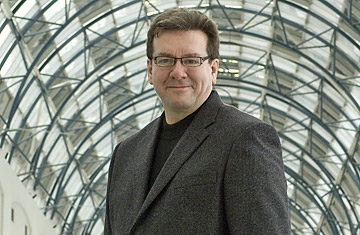
For some people, simple navigation can feel like trying to exit a maze. University of Waterloo (Canada) psychology professor Colin Ellard compared the navigation habits of animals and humans in his July-released book, You Are Here: Why We Can Find Our Way to the Moon but Get Lost in the Mall (Sold as Where Am I? in Canada.) He talked to TIME about how mental maps fail us, the importance of understanding physical space and why a bigger home won't necessarily make you happy.
What sparked the idea for your book?
It really began with the animal research that I was doing in my lab. The animals I worked with were doing a tremendously good job of finding their way and using landmarks. At some point, my students and I had the idea of trying to do some similar experiments with human beings. Compared to any animal that I've ever studied or read about, I would say that the average urban person kind of wanders around in a semi-lost state. In traditional way-finding cultures like the Inuit in the Arctic or the Australian Aborigines, getting lost meant losing your life. And that's usually not the case with us.
Why are some people naturally better at finding their way than others? Is it genetic?
It could be genetic, but I don't think we have any evidence yet that it is. If you look at how traditional way-finding cultures managed, there are certain key elements that you see over and over again. One is that they cultivate an exquisitely fine eye for visual detail. They just plain notice stuff. And a lot of the time in our everyday life, we don't. Everybody encounters people from time to time who say, "I have a wonderful sense of direction. I never get lost." And if you really ask them what it is that they're doing, then that eye for detail is often one of the first things that emerges. People who are exceptionally good way-finders seem to notice [their surroundings] more.
You talk about how a lot of the time, our minds create mental maps that are actually really inaccurate. Did you find a reason for that?
We tend to reduce things to the simplest order that we can. So where there are curves, we straighten them. Where there are weird angles, we make them right angles. And the reason why we're doing that is because it reduces memory load. It's much easier for us to remember something that's got a very simple geometry than something that doesn't. So we align where we shouldn't. We straighten where there are curves. And we make square what's not square at all.
Do men and women find their ways differently?
There's a basic distinction that's often made between navigation using the cardinal directions (north, south, east and west) and navigation using landmarks. And that difference in style is often cast as being part of the basis of gender differences in wayfinding. People say that women are more likely to navigate with landmarks and men are more likely to navigate using the cardinal directions.
What's interesting is that those two different kinds of strategies can either work well or less well depending on where it is that you're trying to navigate. There are some situations in which trying to navigate using the cardinal directions is dooming yourself — [think of] cities with a very kind of organic layout like London or Paris. But contrast that with a grid city like Manhattan, where cardinal directions might make much more sense.
You mentioned how "You Are Here" signs can actually make people feel more lost. Can you explain why that is?
For a "You Are Here" map to work, it's almost universally true that the upwards direction on the map has to translate to the direction in front of you. And if it's not, it's worse than no map.
You say the way that cities, offices and homes are designed can really influence people. Do you think that their design contributes a lot to people's happiness and even their success?
Absolutely. Especially in North America, I think we tend to equate square feet with happiness. We need a big house to be happy. What's interesting is it's not actually the size of a domestic space that influences how we feel there. It's the layout, the appearance, our degree of comfort.
